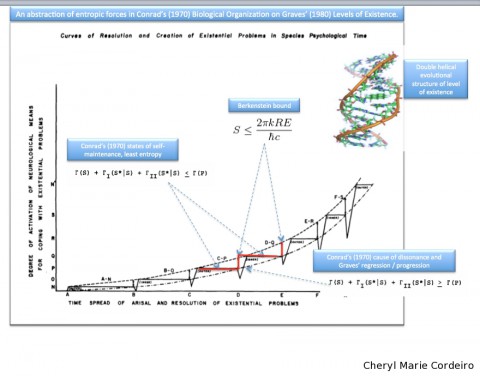
An abstraction of Michael Conrad’s (1970) Biological Organization on Clare W. Graves’ (1980) Levels of Existence.
Text and Photo © CM Cordeiro 2013
In reading about self-organizing structures for the relevance of theory applied to the field of international business (IB), I thought the ideas expressed by Michael Conrad in his paper entitled, Statistical and Hierarchical Aspects of Biological Organization (made accessible via NASA) was interesting when also applied to the theoretical constructs of Clare W. Graves’ Levels of Existence.
Conrad discusses the differentiation and uncertainty associated with the organization and variability in a biological organization’s compartmental structures, that are expressed in terms of certain entropy measures. In his paper, he tries to ascertain the most efficient operative level of a biological system, landing on the principle of static equilibrium that he uses vector models for representation.